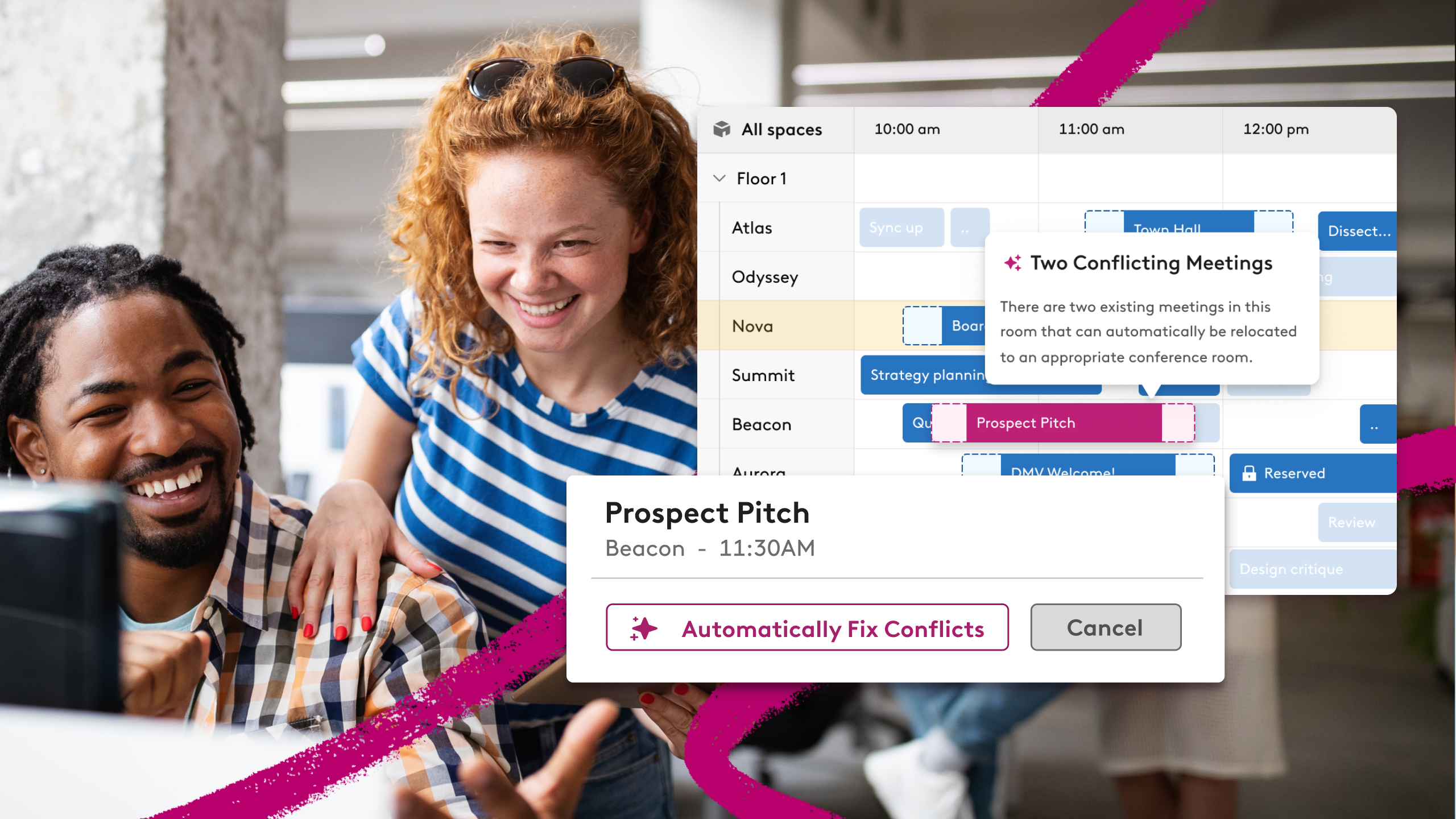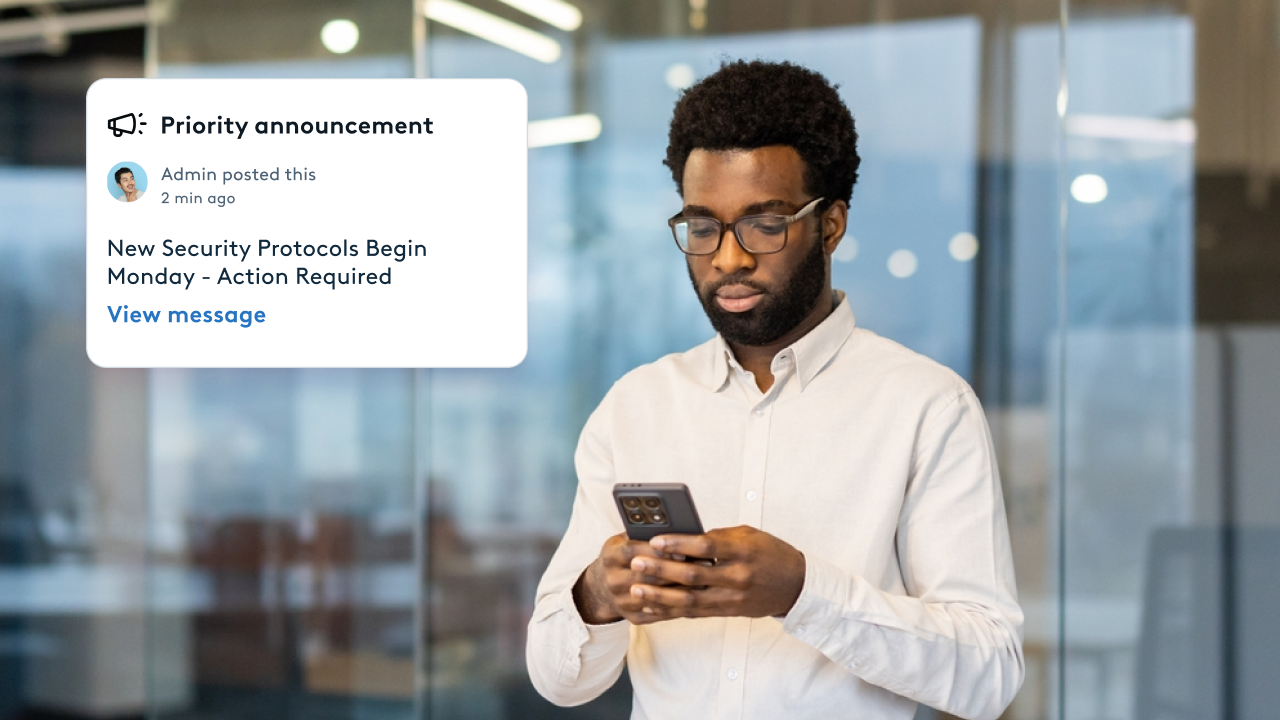Managing the Modern Office
.jpeg)
Our working lives went through a lot of change during the last three years, and the pandemic has further accelerated that transition, providing many employees with greater flexibility over where, when and how they work. Companies all over the world are constantly switching between office and remote work, embracing hybrid as their future.
Another factor with immense impact on the workplace is technology. By continuously changing the way work is done, technology helps leaders keep pace with the constant workplace evolution in the most effective way.
The best solutions can shape an organization's culture and affect how employees interact with the physical workplace and with each other. For that reason, more companies are investing in workplace experience platforms to ensure optimal profitability and productivity in their organizations.
Boosting Productivity with Choice
Ever since flexible work started evolving from a nice-to-have to a must-have, employers have tried to strike a balance with their employees by emphasizing workplace and time flexibility. Employees want to be able to work safely from anywhere (choice), while still being connected to their teammates (connections). Working on improving office experiences within an organization leads to more productivity, retention of talent and stronger business outcomes.
According to the Gartner 2021 Digital Worker Experience Survey, 43% of respondents said that flexibility in working hours helped them achieve more productivity, and 30% of respondents said that less or no time commuting had a similar effect.
Time efficiency and flexibility are the main reasons for achieving greater productivity among workers. Implementing the right workplace strategy with the right level of flexibility creates happier employees who can do their best work effectively, feel more valued and are more likely to stick around.
The Role of Workplace Experience Tools
Workplace experience and resource management can be intimidating, which is why finding a flexible centralized solution plays an important role in implementing a successful modern workplace management strategy.
In fact, together with Wainhouse Research, we interviewed 200 business leaders about their hybrid work plans and found that 73% of managers who use a workplace experience platform feel empowered with appropriate tools to execute their hybrid work strategy.
Desk booking and meeting room scheduling are critical starting points but it’s equally important to understand how they are being used by the whole organization. What is it like for employees to interact with the office? How can your company continue to improve on these experiences?
Create spaces that are used by managing every aspect of the workplace from office layout and stress-free workflows to collaboration and team engagement.

3 Tips for Modern Office Management
Modern office management is more layered than strategies of the past. When thinking about your workplace, you want to ensure that you are considering how that experience drives (or discourages) people from coming back again.
As you continue to iterate on your workplace plans, consider these three areas of focus.
1. Introduce Workplace Tools that Support Change
Introducing strategic tools for hybrid offices can facilitate more frictionless workplace experiences in a time of change. Help your teams save time finding available meeting rooms, open hot desks and each other with things like dynamic office maps and room displays with real-time visibility. As workplaces everywhere continue to navigate through new ways of working, having the right tools in place to support employees can help make transitions smoother.
Even though resource management is critical to any functioning workplace, it’s not the only factor to consider when reimagining the workplace. We now know that the most successful hybrid organizations are leveraging tools that help them look beyond resourcing when creating their workplace strategies. Leaders need to be able to see the full picture in order to create spaces that encourage connection and facilitate change.
2. Help People Collaborate and Connect
Many modern companies use the office to provide employees with what they can’t get from remote work that easily – a connection to the company culture and community. Communication and human connections build trust, boost morale, and help employees stay engaged in the workplace.
People come into the office for experiences, they want to connect with each other and expect their leaders to facilitate that. According to Microsoft’s WTI Pulse Report, 84% of employees would be motivated to come to the office by the promise of socializing with coworkers, while 85% would be motivated by rebuilding team bonds.
What’s more, by enabling visibility into office activity, leaders let people know what is happening at the office, when their work friends would be there, and who else they would be able to connect or collaborate with in the office. In fact, the same Microsoft study found that employees would go to the office more frequently if they knew their direct team members would be there (73%) or if their work friends were there (74%).

3. Let Workplace Analytics Guide Decisions
Leaders must be willing to embrace change, manage it among teams and readjust as they go based on what’s working and what isn’t. You can’t roll out a plan and immediately expect spikes in productivity. Observe what is happening in the office, talk to employees about their experiences and review your plans often.
That’s why community-building solutions and workplace analytics are so critical for today’s workplace. If you want to inspire collaboration, you need to understand what drives it. You can use analytics to see space utilization and occupancy, listen to feedback and observe what kinds of events or activities drive the highest attendance. Hybrid work is an iterative process, ensure you have the data to drive your strategies.
The Optimal Workplace Experience
If you want to bring your employees back to the office, you need to think beyond just desk booking and meeting room scheduling. A well-planned strategy means focuses on the workplace experience in order to boost productivity and collaboration. That type of strategy requires decision-making based on data and insights provided by the appropriate resources.
Ready to implement modern workspace management strategies in your organization? Download our one-pager on Supporting Hybrid Strategies for the Modern Workplace to find out how the Robin platform can help manage and build better office communities.













